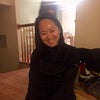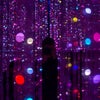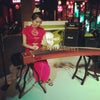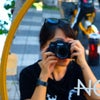Lingyin Temple (simplified Chinese: 灵隐寺; traditional Chinese: 靈隱寺; pinyin: Língyǐn Sì) is a Buddhist temple of the Chan sect located north-west of Hangzhou, Zhejiang Province, China. The temple's name is commonly literally translated as Temple of the Soul's Retreat. It is one of the largest and wealthiest Buddhist temples in China, and contains numerous pagodas and Buddhist grottoes.
The monastery is the largest of several temples in the Wulin Mountains (Chinese: 武林山; pinyin: Wǔlínshān), which also features a large number of grottos and religious rock carvings, the most famous of which is the Feilai Feng (飞来峰; literally: "the peak that flew hither").
According to tradition, the monastery was founded in 328 AD during the Eastern Jin dynasty by an Indian monk, named Huili in Chinese. From its inception, Lingyin was a famous monastery in the Jiangnan region. At its peak under the Wuyue Kingdom (907-978), the temple boasted nine multi-story buildings, 18 pavilions, 72 halls, more than 1300 dormitory rooms, inhabited by more than 3000 monks. Many of the rich Buddhist carvings in the Feilai Feng grottos and surrounding mountains also date from this era.
During the later Southern Song dynasty, the monastery was regarded as one of the ten most important temples of the Chan sect in the Jiangnan region. However, its prominence has not saved the temple from marauders. It has been rebuilt no less than sixteen times since then. The current buildings are modern restorations of late Qing buildings. During the Cultural Revolution, the temple and grounds suffered some damage at the hands of Red Guards. However, they escaped large scale destruction partly because of the protection of Premier Zhou Enlai.
Today the temple is thriving as a destination for both pilgrims and tourists. It is regarded as one of the wealthiest monasteries in China, and regular pilgrims have included former paramount leader Deng Xiaoping.
The Wuling Mountains area is a major centre of Chan Buddhism in south-eastern China. A number of smaller temples are also located in the area. Today, Lingyin and the surrounding areas are marketed as the Lingyin-Feilai Feng Scenic Area, with ticketed admission. Visitors enter from a screen wall marked with a four character inscription "the Western Heaven is within reach" (Chinese: 咫尺西天; pinyin: zhíchǐ Xītiān; literally: "Western Heaven is between 0.8 and one foot away"). Proceeding down the road from the entrance, the visitor first sees Feilai Feng on the left, then Lingyin Hill on the right. The entire scenic area is dotted with historic buildings and artwork, including pagodas, pavilions, bridges, and statues. The largest stone pagoda is located near the entrance. Called Elder Li's Pagoda (理公塔), it houses the ashes of Huili. The area is thickly wooded, with some trees labelled as many centuries old.
Feilai Feng, or "the Peak that Flew Hither", also commonly translated as "Flying Peak", is located in front of the temple proper. The peak is so-named because it is made of limestone, giving it a craggy appearance very different from the surrounding mountains. Legend holds that the peak was originally from India (with some versions suggesting that it is Vulture Peak), but flew to Hangzhou overnight as a demonstration of the omnipotence of Buddhist law. A large number of rock reliefs dot the surface of the peak. More are located in various caves and grottoes throughout the peak. Within the main cave, dedicated to the bodhisattva Guanyin, there is a crack in the ceiling of the cave that stretches up to the surface, so that a person standing at a certain position can see a sliver of sunlight. This is known as the "one thread of heaven" (Chinese: 一线天; pinyin: Yīxiàn Tiān).
The main axis of Lingyin follows a traditional Song dynasty five-hall Chan sect structure. The main axis stretches up the Lingyin Hill. However, the five-hall axis is a recent recreation. Only the front three halls are a part of the Qing dynasty axis.
The formal entrance of the temple is the Hall of the Heavenly Kings (Chinese: 天王殿; pinyin: Tiānwáng Diàn). This hall is a double-eaved building. The front of the building carries a plaque (Chinese: 云林禅寺; pinyin: Yúnlín Chán Sì; literally: "Chan temple of the Clouds and Forests"), written by the Kangxi Emperor. The principal statue in this hall is that of the Maitreya Buddha in his manifestation as the cloth bag monk, or the Laughing Buddha. At the back, facing up the hill, is the Skanda Buddha, or Weituo as he is known in Chinese. This statue dates from the Southern Song Dynasty. Being 800 years old this is the oldest and most important statue in the temple. Arranged along the left and right are the Four Heavenly Kings. The ceiling is ornately painted and decorated with phoenixes and dragons.
The four heavenly kings are imposing. Visitors to the temple are often impressed by the size and majesty of the entrance hall and its statues of the heavenly kings. Indeed, the hall of the Heavenly Kings at the Lingyin Temple is as large or larger than the main hall at many temples, reflecting its status as the centre of Buddhism in south-eastern China.
The Hall of the Heavenly Kings is the formal entrance to the temple. However, this entry has been closed in recent years, with visitors funneled instead through side doors, where separate ticket offices are set up for admission to the temple.
The second and principal hall is the Mahavira Hall, or the Grand Hall of the Great Sage (Chinese: 大雄宝殿; pinyin: Dàxíong Bǎodiàn). It is separated from the Hall of the Heavenly Kings by a large courtyard, featuring a raised lawn bordered with trees. To the left of the courtyard stands the Hall of the Five Hundred Arhats. The Grand Hall of the Great Sage is triple eaved and stands 33.6 metres tall. It houses, as is traditional, a statue of Shakyamuni, the historical Buddha. The present statue was carved in 1956 from camphor wood in Tang Dynasty style and coated with 60 taels of gold. It is the largest wooden Buddhist statue in China. At the back of the main statue is a statue of Guanyin, backed by a large screen that features the carved images of some 150 Buddhist personalities, including the pilgrims of the Journey to the West, Daoji, and arhats. Arranged along the sides of the hall are images of the 18 principal arhats, and other prominent Buddhists. The interior of the hall reaches about 30 metres, with a gold-painted ceiling featuring bas-relief images of traditional Buddhist symbols.
Further uphill and behind the main hall is the Hall of the Medicine Buddha (Chinese: 药师殿; pinyin: Yàoshī Diàn), housing a statue of the Bhaisajyaguru Buddha, commonly called the Medicine Buddha.
Uphill from the Hall of the Medicine Buddha is the Sutra Library (Chinese: 藏经楼; pinyin: Cángjīng Lóu). This, and the Huayan Hall behind it, were built from 2000 to 2002 to re-create the five-hall main axis. The Sutra Library does not house a major statue and is not open for worship.
The fifth and last hall on the main axis is the Avatamsaka Hall, or Huayan Hall (Chinese: 华严殿; pinyin: Huáyán Diàn). Also built in 2002, this hall houses statues of the three sages of the Avatamsaka Sutra, known as the Huayan Sutra in Chinese - Shakyamuni, Manjusri, and Samantabhadra.
The Hall of Five Hundred Arhats (Chinese: 五百罗汉堂; pinyin: Wǔbǎi Luóhàn Táng), also a modern addition, faces onto the western side of the courtyard in front of the main hall. The building has a complex floor plan, shaped like a Buddhist swastika. Along the arms of the swastika are arranged the five hundred arhats as slightly larger-than-life bronze statues. Each statue is seated on a unique ornate seat. At the centre, where the arms of the swastika join, stands a bronze canopy housing statues of four bodhisattvas representing the four cardinal directions. This is currently the tallest solid bronze structure in the world.





